Andrew Lawler
Advisor: Shawn Bailey
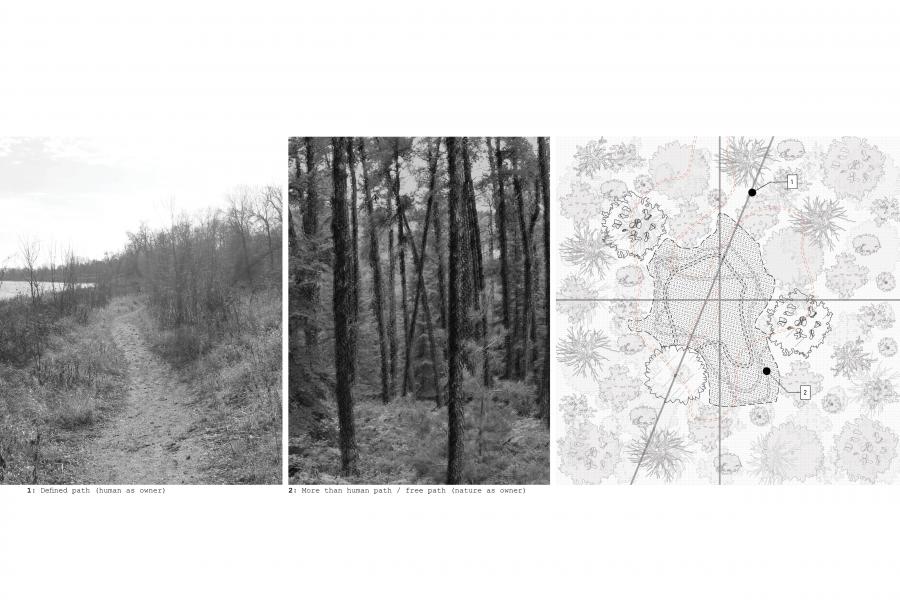

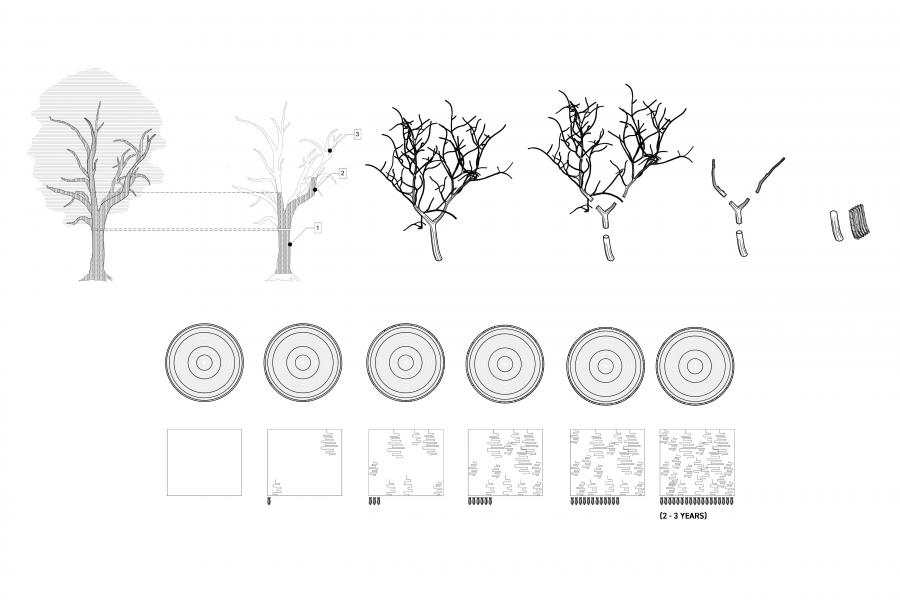
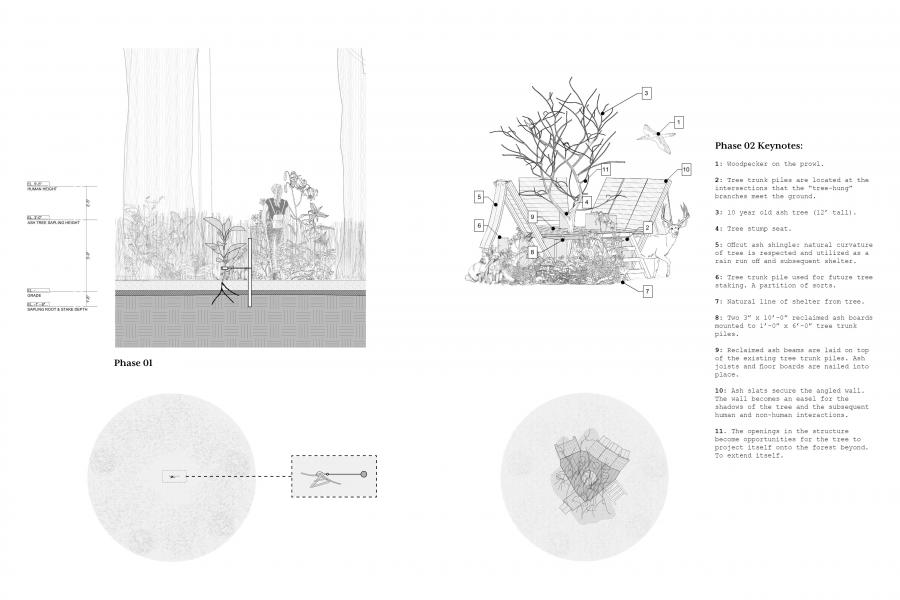
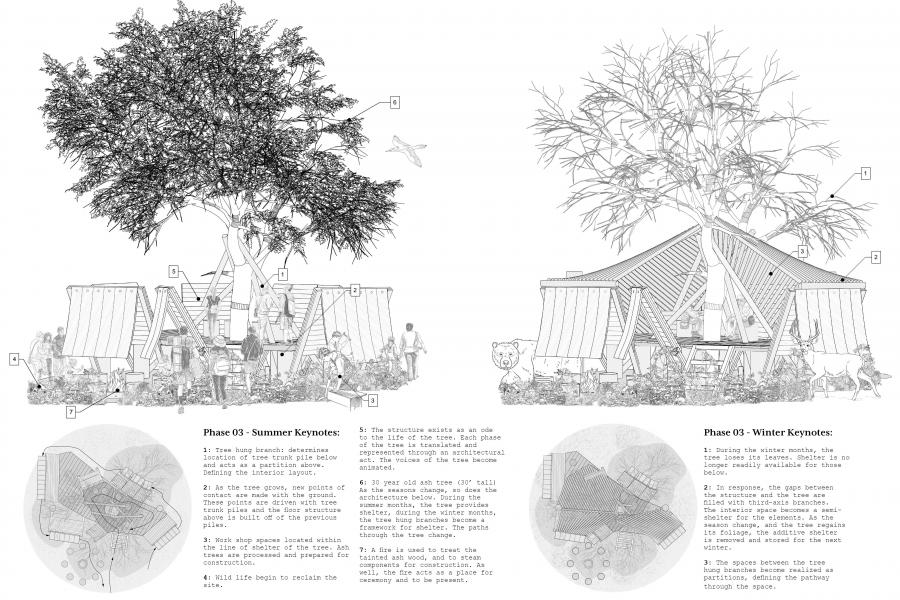
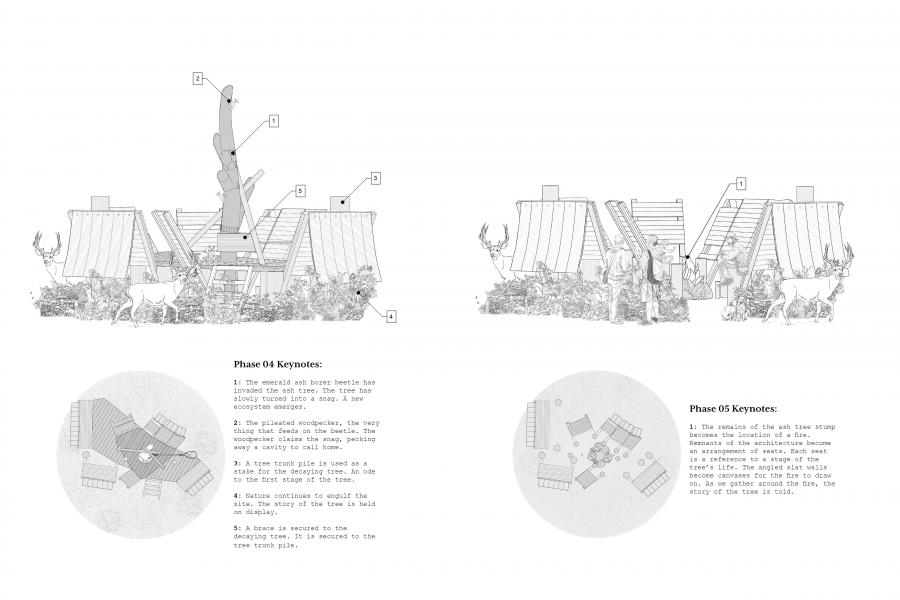
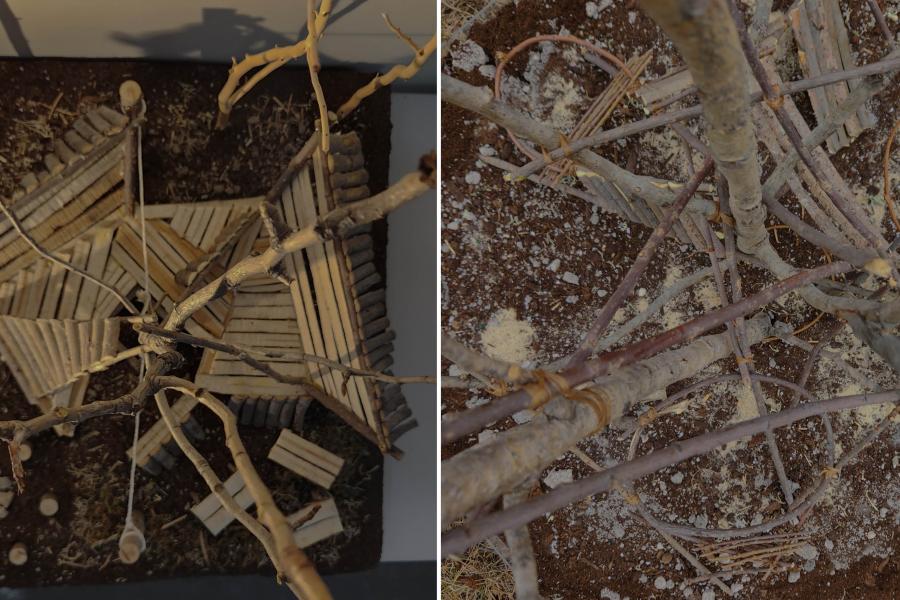
Tree as Jig
The term "jig" carries a diverse range of connotations, often attaching itself to objects and shifting its meaning based on context. This adaptability is evident in phrases like "Pass me the jig," where the word's interpretation hinges on surrounding circumstances.
Among the various contexts, woodworking stands out as a prominent reference when contemplating the term "jig." Within this realm, an array of jigs caters to different tasks and challenges.
The concept of jigs extends beyond physical tools; it encompasses the negative formwork facilitating steam bending, the physical forces applied to bend wood, the very tree from which the wood originates, and even the interweaving fibers of the wood itself.
Intriguingly, jigs are ubiquitous, often hiding in plain sight—the tree serving as a prime example.
Throughout my life, the tree has subtly shaped many of my experiences. Initially, I viewed trees as mere playmates, existing entities to interact with. It is so easy to take trees for granted, considering them objects devoid of higher qualities, contributes to the disconnect. However, as time progressed, I began to realize that the tree's growth mirrors my own journey.
The dehumanization of trees is a root cause of this dissociation. Viewing trees as mere objects makes it easier to impose our perspective upon them while ignoring their potential for expression.
Reconnecting with trees necessitates an introspective approach. Recognizing our stories and the roles trees play within them is pivotal.
For this thesis, my own narrative becomes the starting point—an exploration of moments intertwined with trees. By dissecting these interactions, I embark on a journey to reshape my perception of trees. This process entails delving into the world of trees, beginning with surface-level understanding and branching into metaphorical exploration.
At a micro level, trees are dissected into layers, each layer is given a voice, even the inconspicuous ones. This approach transforms trees from objects into multifaceted entities, unraveling their latent potential. It also disassembles conventional tree felling and processing, delving into the concealed layers to unearth their inherent capacities.
Zooming out, trees are observed in their entirety, masterful products of their environments. Each stage, from growth to eventual decay, imparts lessons in adaptation. This adaptability becomes a template for conscious architectural design. Trees, at this level, metamorphose into tools for comprehending environments.
At the macro scale, the study's implications are magnified. Trees' role as designers and their impact on urban landscapes are explored. This endeavor envisions cities embracing a more arboreal character, mirroring forests' intricate harmony.
Engaging in this dialogue with trees transcends their mere utilitarian status. It begins a conversation, unveiling their stories, voices, and perspectives. Through this exchange, trees emerge as mirrors, reflecting aspects of our own selves.
Although I cannot fathom trees' complete thoughts, I can scrutinize them in great detail. This examination enhances my approach to trees, demystifying their potential and encouraging a novel design ethos. By delving into trees' concealed attributes, we embark on a journey of transformative design, fostering a richer relationship with both trees and our surroundings.
